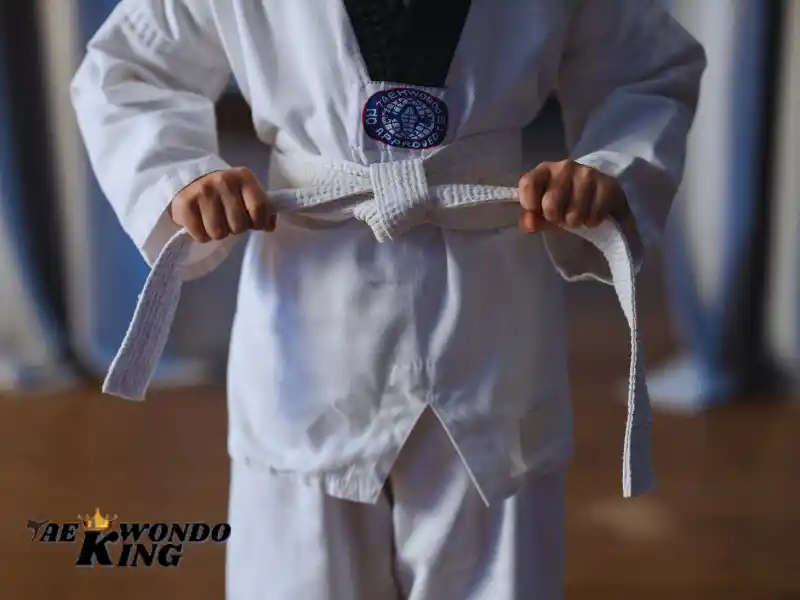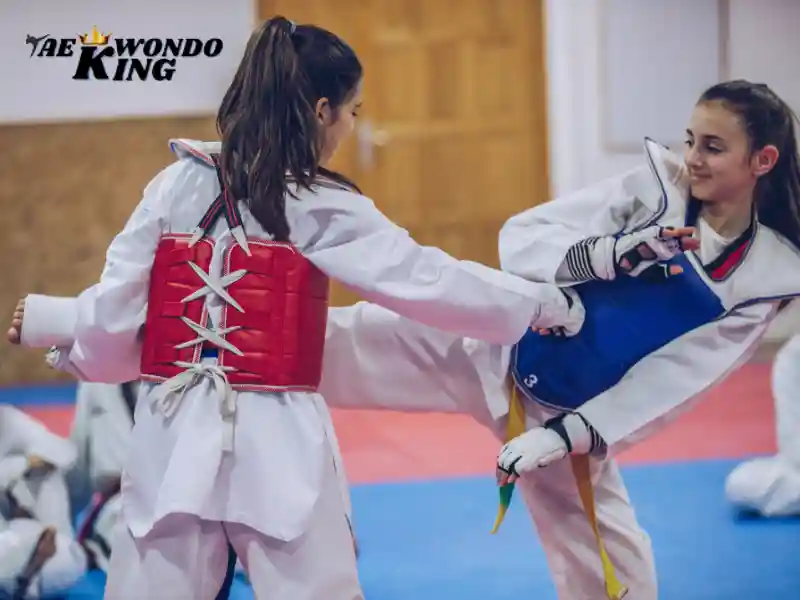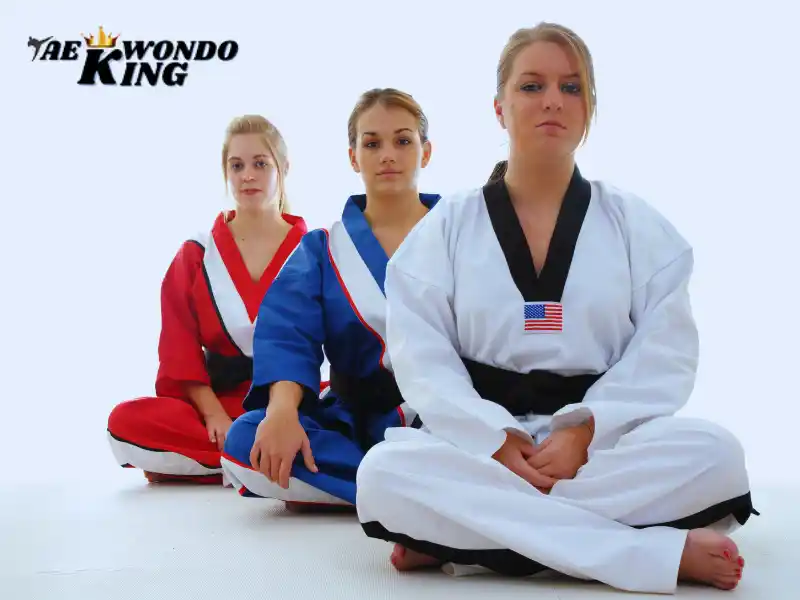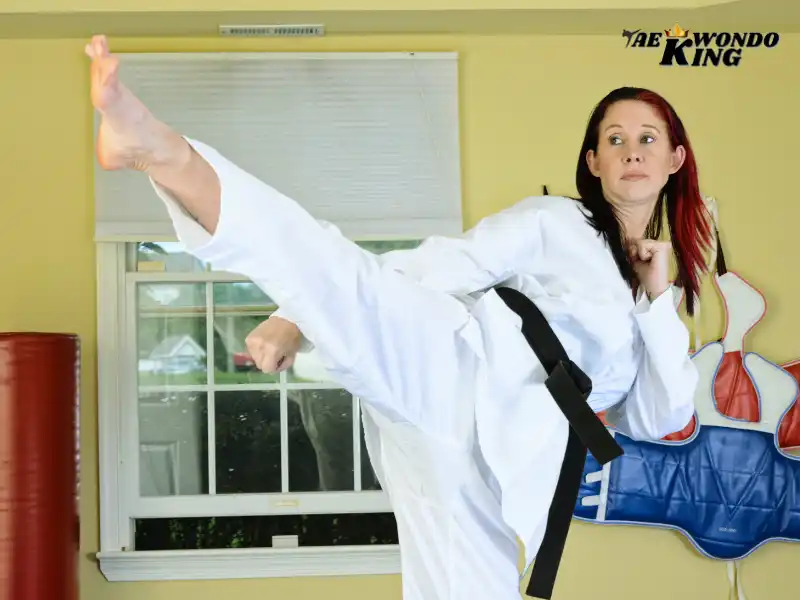
“Martial arts, can I start at 40?” I asked myself that exact question when I hit my fourth decade, juggling work stress, creaky knees, and a craving for something more. If you’ve ever felt the same, you’re not alone. With two decades of training under my belt and a few new aches along the way, I can tell you, yes, you absolutely can.
In this guide, I’ll share which styles fit best, what to expect, and how martial arts can help you feel stronger at any age. Let’s break the myth that it’s too late to begin.
The question that pops into every martial artist’s mind is, “Which martial art can I start?” The good news is that there are a ton of great options out there for folks of all ages. The bad news is that you’re probably not the best judge of which one’s best for you. What Martial Art should you choose?
There’s no shortage of opinions about what’s the best martial art for beginners and/or the best one for advanced students. No matter what martial arts you choose, you’ll get better faster and further if you focus on improving your core mechanics. Here’s my take on why.
Check out the latest prize in Martial Arts Weapons on Amazon.

What is the best Martial Art for me at 40?

There is no one martial art that’s ideal for everyone. But some principles of martial arts work well in all situations. Here are a few of the best ones for beginners:
- Karate: It’s a great cardio workout. And the best part is that you don’t have to spend hours learning how to do it. There is no shortage of older people who train in Karate.
- Taekwondo: It’s the perfect balance of cardio, strength training, and kicking skills. Plus, the forms are easy enough to pick up. It is one of the best martial arts for men over the age of 40.
- Kung Fu: The best part about Kung Fu is the history. It’s been around for thousands of years, so you can practice and learn some cool moves. Kung Fu: The truth about martial arts styles for men over 40.
- Kickboxing: This is a mix of martial arts and cardio, which makes it very popular among fitness buffs and people who just love working out.
- Krav Maga: It’s a system of hand-to-hand combat developed for military use.
- Tai Chi: It combines gentle movement with deep breathing techniques and meditation.
- Boxing: It requires strength and endurance, so it’s ideal for older folks who want to maintain their fitness.
- Brazilian Jiu-Jitsu: This is the most commonly practiced martial art in MMA.
- Muay Thai: It combines boxing with kickboxing and focuses more on kicks than punches.
If you’re looking for an answer to this question, you’re in luck because there are many martial arts available. You don’t need to wait until retirement to get started on your martial arts training. In this article, we are talking about What martial art can I start at 40?
What are the advantages of martial arts for me?
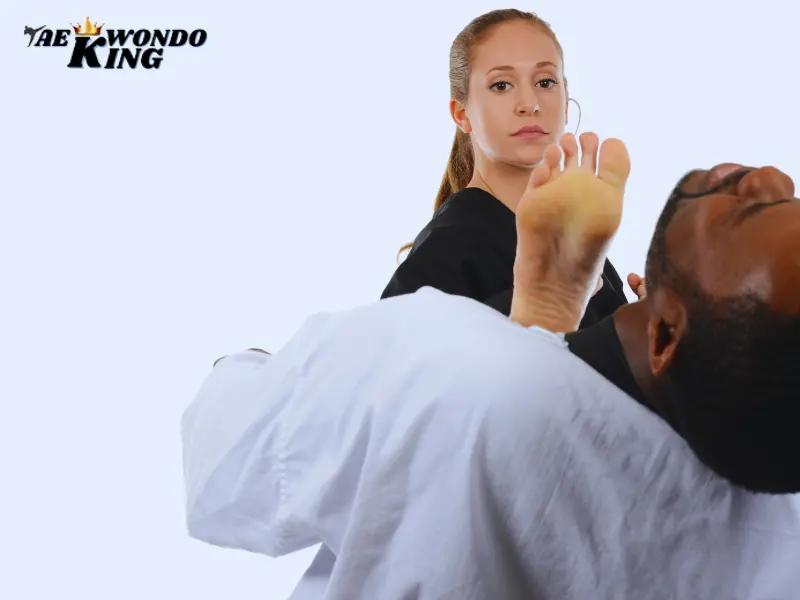
- Martial arts build you up physically, mentally, and emotionally.
- You’ll have more confidence, better balance, and greater flexibility.
- You’ll be more alert.
- You’ll be more able to respond effectively in stressful situations.
- You’ll be better at problem-solving.
- You’ll be less likely to get injured.
- You’ll be more capable of maintaining your focus when under stress.
- You’ll increase your mental clarity and ability to concentrate.
- You’ll feel more relaxed and calmer.
- You’ll build strength, endurance, and coordination.
- You’ll become more adept at timing and distance in combat.
Check out the latest prize in Martial Arts Weapons on Amazon.

How can I find a school near me?
Start martial arts classes in your home or community if you’re ready to begin. But if you feel intimidated or overwhelmed by the prospect of starting something new, consider the following: Find a class near you that offers a free trial or free introductory session. TKD takes only about 3 years to become a “black belt” under traditional martial arts programs. There are some kids that are black belts at ages 5-7.
Ask friends and family who practice martial arts what they recommend. Visit local gyms to see what kinds of classes they offer. Taekwondo gi, taekwondo uniform, taekwondo belts, and taekwondo ranks are essential in taekwondo classes in a taekwondo academy. If you cannot locate a martial arts or taekwondo academy class that is offered nearby, consider taking a martial arts class online. How many days should you train in Taekwondo?
Which schools offer the best program for me?
Martial arts is a great activity to consider because it provides the opportunity to get physical while simultaneously learning self-discipline, focus, strength, and flexibility. It can help you meet people and form meaningful friendships.
At 40, you’ll likely have a few physical limitations. Some activities are impossible or impractical, such as lifting heavy objects or climbing mountains. However, many martial arts are appropriate for older adults.
At a minimum, a martial arts school should offer instruction for at least five different styles of martial arts. This ensures that students will receive a broad range of instruction and be exposed to all the movements that comprise their style. Many schools also include classes for fitness, self-defense, yoga, meditation, and dance.
They may even offer instruction in another martial art. The best schools often offer training in multiple styles and disciplines, too. This ensures that students will have access to a wide range of techniques and skills and can try out new ones.
To help your child get into an art program that’s right for him or her, you’ll need to know a little about the various styles and programs available. You should also know a little about each style or school that your child is considering.
Check out the latest prize in Martial Arts Weapons on Amazon.

What do I need to get started at 40?
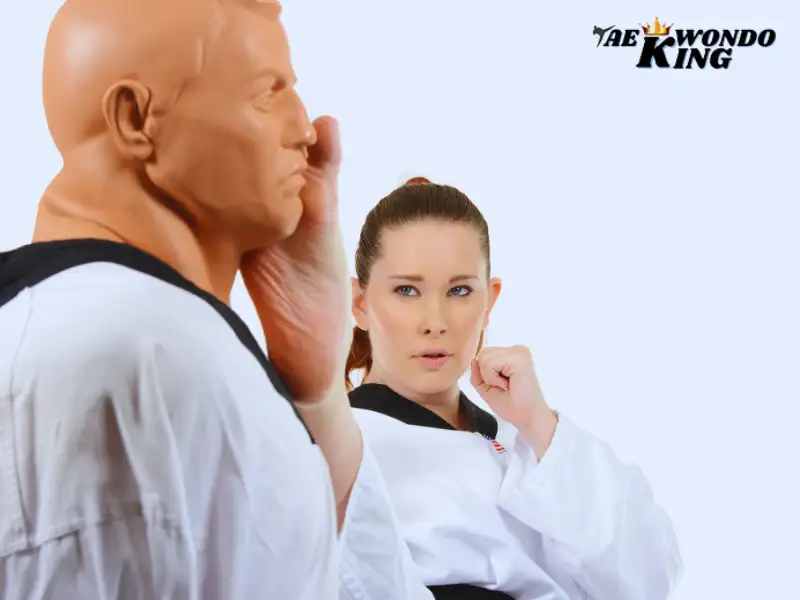
Many people start martial arts when they are in their 20s and 30s. As a result, they’re often considered old at the age of 40. But there is no reason you can’t begin a martial art at any age. As you age, you’ll need to modify some of your workout routines. Here’s why:
Most martial arts require a lot of weight training, especially those that are designed to promote strength, muscle tone, flexibility, and endurance. You’ll also have to consider that the older you get, the harder it will be to move that weight around.
Your joints and ligaments will begin to stiffen up, and you’ll have to work harder to maintain the same level of fitness as you did when you were younger. If you’re thinking about beginning a new exercise program or simply want to improve upon your existing one, here are four things to keep in mind.
Many people assume that learning a martial art is difficult because it requires a lot of physical exertion. That’s not necessarily true. Sure, if you are looking to get into a traditional style, the training requirements may seem overwhelming.
But many styles of martial arts aren’t as physically demanding as others. The key to getting started is to begin slowly. Start with a gentle, low-impact style like tai chi or Taekwondo to build your strength and flexibility, and then gradually move up to a more challenging style like kung fu or boxing.
What are the benefits of training in martial arts at 40?
At the age of 40, many people feel like they’re either too old or too young to learn a new skill or even to start practicing their existing skills. However, there are lots of ways to improve your life without being athletic, competitive, or young.
People who train in martial arts at 40 are less likely to get injured, are more physically fit, and have higher self-confidence than those who do not train at all. Training in martial arts can help people over 40 deal with aging and physical limitations. People who practice martial arts are also less likely to fall into depression or anxiety and more likely to feel more engaged in life and in their communities.
Is it too late to start practicing Martial Arts at 40?
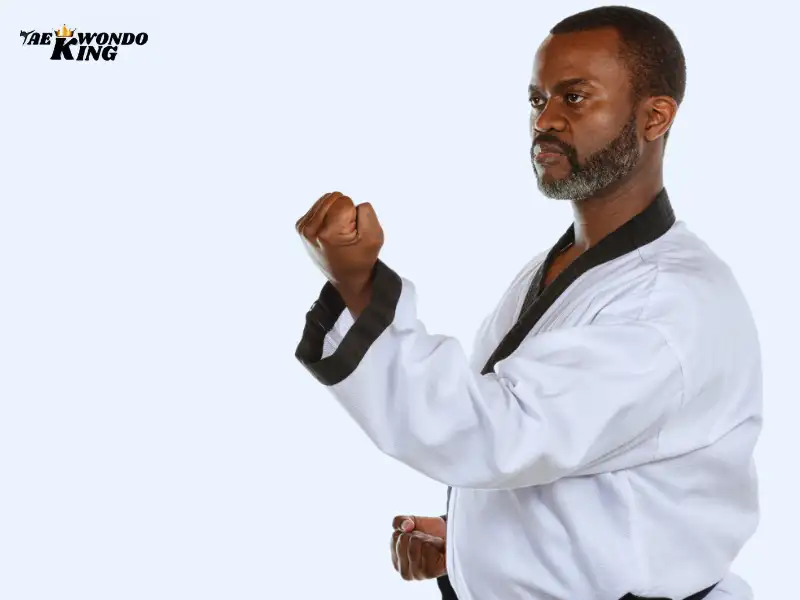
It is never too late to start practicing martial arts, even at the age of 40. Many martial arts schools and instructors welcome students of all ages and skill levels. It is important to find a style and instructor that suits your goals and physical abilities. With dedication, practice, and proper training, you can still learn and benefit from martial arts at any age.
What martial arts styles are suitable for beginners in their 40s?
There are various martial arts styles that are well-suited for individuals in their 40s who are beginners. Some popular choices include Tai Chi, Krav Maga, Brazilian Jiu-Jitsu, and Hapkido. These styles prioritize self-defense techniques, physical fitness, and flexibility, which makes them accessible to people of different ages and fitness levels. It is advisable to consult with a qualified instructor to determine the most suitable style based on your specific needs and goals.
Are there any age-related considerations or precautions for adults starting martial arts at 40?
Starting martial arts at the age of 40 can be a wonderful way to stay active and enhance physical fitness. However, it is crucial to take into account certain age-related factors and take necessary precautions to ensure a safe and enjoyable experience. Adults who decide to begin martial arts at 40 may need to pace themselves and gradually increase the intensity and duration of their training to avoid injuries. It is highly recommended to consult with a physician before embarking on any new physical activity, particularly if there are any pre-existing health conditions.
Furthermore, selecting a martial arts style that emphasizes technique and control rather than intense physical contact may be more suitable for older adults. Lastly, it is essential to listen to your body, incorporate rest days into your training schedule, and properly warm up and cool down before and after each training session to prevent injuries.
How do martial arts benefit adults starting at 40, both physically and mentally?
Martial arts can offer numerous benefits for adults starting at the age of 40, both in terms of their physical and mental well-being. Physically, engaging in martial arts can lead to improvements in cardiovascular fitness, strength, flexibility, and balance. It can also aid in weight management and boost overall energy levels. Moreover, martial arts training can enhance coordination and agility, which becomes increasingly important as we grow older.
Mentally, martial arts can provide stress relief and contribute to improved mental focus and discipline. Engaging in martial arts can also help boost self-confidence and self-esteem as adults learn new skills and achieve their goals. Additionally, participating in martial arts training can foster a sense of community and camaraderie, as adults often train in group classes and establish relationships with fellow practitioners. Martial arts can serve as a comprehensive approach to enhancing both physical and mental well-being for adults over the age of 40.
Can adults in their 40s participate in Martial Arts competitions or tournaments if they start training now?
Yes, adults in their 40s can definitely participate in martial arts competitions or tournaments if they start training now. Many martial arts schools and organizations have divisions and categories specifically for different age groups, including adults. It’s never too late to start learning and training in martial arts, and with dedication and practice, adults in their 40s can certainly compete and excel in competitions or tournaments.
What is the role of fitness and conditioning in preparing for Martial Arts training at 40?
Fitness and conditioning are essential when preparing for martial arts training, regardless of age, even at 40. Engaging in regular exercise and conditioning can significantly enhance strength, endurance, flexibility, and cardiovascular health, all of which are crucial for martial arts. It is recommended to seek guidance from a fitness professional or martial arts instructor to create a training plan that suits your age, fitness level, and any specific goals or limitations you might have. It is equally important to listen to your body, give it adequate rest and recovery, and gradually increase the intensity and duration of your training to prevent injuries.
How do different Martial Arts styles accommodate the physical limitations that can come with age?
Different martial arts styles accommodate physical limitations that can come with age by offering modified techniques, focusing on flexibility and mobility exercises, and emphasizing strategy and technique over physical strength. Many styles also provide options for practitioners to train at their own pace and intensity level, allowing them to continue practicing martial arts in a way that suits their individual needs and abilities. Additionally, some styles have specific programs or classes designed for older adults, which may incorporate low-impact movements and exercises to reduce the risk of injury. It is always recommended to consult with a qualified instructor or trainer to find a martial arts style that aligns with one’s physical limitations and goals.
Can adults starting at 40 achieve high-ranking belts in Martial Arts, or is it primarily for personal growth and fitness?
Achieving high-ranking belts in martial arts can be more challenging for adults starting at 40 compared to those who start at a younger age. However, it is still possible with dedication, consistent training, and proper guidance. Martial arts training can provide personal growth, improved fitness, self-defense skills, and a sense of accomplishment regardless of age. It is crucial to find a martial arts community that is supportive and inclusive, understanding the needs of adult learners.
Check out the latest prize in Martial Arts Weapons on Amazon.

In conclusion,
For all ages, the principles of martial arts remain the same. Whether you’re learning for self-defense, sport, or spiritual purposes, you should focus on developing mental toughness through the correct application of these core concepts. I learn one type of martial art or study several types; the key to martial arts is learning to be strong mentally, physically, emotionally, and spiritually.
Martial arts at 40 can help you achieve this, but they will not take the place of a healthy lifestyle. If you are interested in learning a martial art, I would recommend starting with one that requires little commitment and has a low risk of injury, such as Taekwondo or Hapkido. If you’re looking for a higher level of challenge, I suggest trying a sportier martial art, like boxing or karate.
FAQs
Can you do MMA at 40?
Yes! Many start MMA at 40 for fitness or fun. Just train smart and pace yourself. Learn more about MMA for beginners over 40.
Can I start Taekwondo at 40?
Absolutely! Taekwondo builds strength, balance, and focus, great at any age. Learn more about training Taekwondo at 40 and beyond.
Can I learn Karate at 42?
Yes! Karate helps improve mobility, focus, and health. It’s never too late to begin. Learn more about starting karate as an adult.
Is 40 too old to start Martial Arts?
No! Age doesn’t stop you. Martial arts boost health, mindset, and confidence. Learn more about starting martial arts in your 40s.
Is 50 too old to start Muay Thai?
Not at all! Many enjoy Muay Thai in their 50s for fitness and focus. Go at your own pace. Learn more about Muay Thai for older adults.
What is the age limit for Martial Arts?
There’s no strict limit! You can start martial arts at nearly any age. Learn more about training options for all life stages.
Can a 50 year old man learn Martial Arts?
Yes! Many 50+ students thrive with regular training and care. Learn more about how martial arts benefit older adults.
What is the best Martial Art to start in your 40s?
Try Taekwondo, Aikido, or Brazilian Jiu-Jitsu. They mix fitness, skill, and fun. Learn more about age-friendly styles.
What is the best Martial Art to start with as an adult?
Taekwondo, Karate, or BJJ are great choices. They build strength, skill, and discipline. Learn more about finding the right fit for you.
Check out the latest prize in Martial Arts Weapons on Amazon.


Founder, Owner, and CEO of TaekwondoKing.
He is one of the top 100 martial artists in the World and among the top 20 referees in Bangladesh.
Ehatasamul Alom is an esteemed Kukkiwon Certified Taekwondo 3rd Dan Black Belt with over 15 years of experience in this dynamic martial art. Born in Rajshahi, Bangladesh, Ehatasamul’s journey with Taekwondo began at the tender age of seven. His passion led him to compete at national and international levels, where he has bagged numerous awards and honors. He is also a member of the Taekwondo National Referee Panel.
With a Bachelor’s degree in Sports Science from the prestigious Rajshahi University, Ehatasamul has a deep understanding of the technical and scientific aspects of martial arts and some other martial arts.
In 2022, Ehatasamul created the “TaekwondoKing.com” to share his knowledge, Free Resources, Values, and Real experiences. His articles focus on Taekwondo training techniques, competition strategies, Sport Products Reviews, and the art’s rich history and philosophy. He also writes about the importance of mental fortitude and discipline, key aspects of his teaching philosophy. He has already launched many sports, Taekwondo, and health-related Free online tools. His goal is to inspire both beginners and seasoned practitioners worldwide through insightful and engaging content.
If you need any help, contact Ehatasamul Alom at any time.

